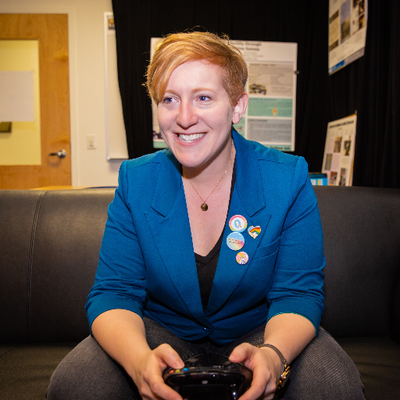My article, “Straight Paths Through Queer Walking Simulators: Wandering on Rails and Speedrunning in Gone Home,” was published today (online first) in Games and Culture!
It’s about the queer meaning of movement in video games and how a game like Gone Home can be “straightened” through play — or even uncovered as “straight” through analysis of the game’s spatial design. Here’s the abstract:
This article identifies the limitations of queerness in Gone Home (The Fullbright Company, 2013) by exploring the ways in which players’ movements through space in video games can be considered queer or “straight.” Drawing from Sara Ahmed, I demonstrate how the potential for queer in-game movement in Gone Home has been straightened both by the game itself and by elements of its player reception. Gone Home is widely seen as exemplifying a current shift toward increased LGBTQ (lesbian, gay, bisexual, transgender, and queer) representation in video games. The game is also associated with queerness through its status as a “walking simulator,” a genre with ties to the queer flaneur. Indeed, Gone Home’s gameplay seems to encourage queer wandering, moving not straight but instead meanderingly. Yet, a closer analysis of its interactive elements reveals that Gone Home is far less queer than it may initially appear. The player’s path is rigid and linear, much like in a “rail shooter.” The potential for queer movement in Gone Home has been furthered straightened by speedrunners who play the game along the straightest possible paths. This article argues for player movement as an important site of meaning in video games and calls for an increased engagement with the tensions that surround queerness and video games.
As always, thanks to everyone doing related scholarship — on walking sims, speedrunning, the cultural meaning of spatiality and movement in games, etc. — for informing and enriching my work!

